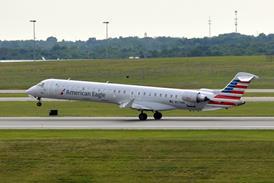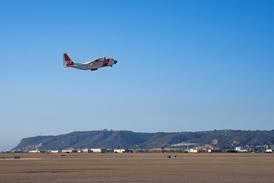Pilots of a BMI Regional Embraer ERJ-145 were caught out by false ILS signals before the jet was involved in a serious airprox incident with a light aircraft during approach to Norrkoping airport last year.
The ERJ-145, inbound from Munich, had been south-east of the airport, heading north.
Its crew had requested to self-position for an ILS approach to runway 27. This involved navigating towards a point on the extended approach path, then turning left to line up and follow the ILS.
But before reaching the centerline, 7nm to the north, the aircraft intercepted a false localiser signal offset from the centerline by 42° to the south.
As a result the aircraft – flying at 2,100ft with its ILS approach mode armed – started turning to the left to follow the false localiser path, heading north-west, rather than west, towards the airport.
At the time of the turn the light aircraft, an ATEC Zephyr 2000, had been flying west in uncontrolled airspace at 1,400ft.
Swedish investigation authority SHK believes the controller did not consider the ERJ's premature turn to be unusual, because the crew had asked to self-position, while the pilots were probably distracted by the appearance of conflicting traffic on their collision-avoidance system.
"The crew was not aware of the risk that a false localiser signal could be captured by the aircraft's ILS," it adds.
SHK conducted a test flight in the region and determined that there was not only a false localiser signal in the region of the incident but a glideslope signal as well, which the test flight followed from 2,100ft to 1,600ft.
The inquiry says that this false glideslope was also "probably followed" by the ERJ, which commenced a descent from its cleared altitude of 2,100ft.
Shortly after turning onto the false localiser path, the ERJ crew made a break-off turn towards the south. But the descent profile and the break-off meant the ERJ started converging on the Zephyr's flightpath.
The ERJ crew, who had visual contact with the Zephyr, executed a go-around.
SHK says the ERJ had descended to 1,600ft – despite the crew's repeatedly insisting to air traffic control that they had maintained their assigned altitude – and it came within 0.85nm and 200ft of the Zephyr.
"Planning and follow-up of the approach were not carried out in an appropriate manner," says SHK in its findings into the 17 October 2018 incident, adding that "lack of knowledge" of false ILS signals was a contributing factor.
The inquiry says some approach charts warn of false localiser signals, including that for Stockholm Bromma which instructs crew not to arm ILS equipment too early, in case the wrong signal is captured.
Swedish air navigation service LFV is aware of the false localiser at Norrkoping and the approach chart for runway 27 requires verification of the approach by automatic direction finder and other navigation aids.
BMI Regional has since ceased operations.


























